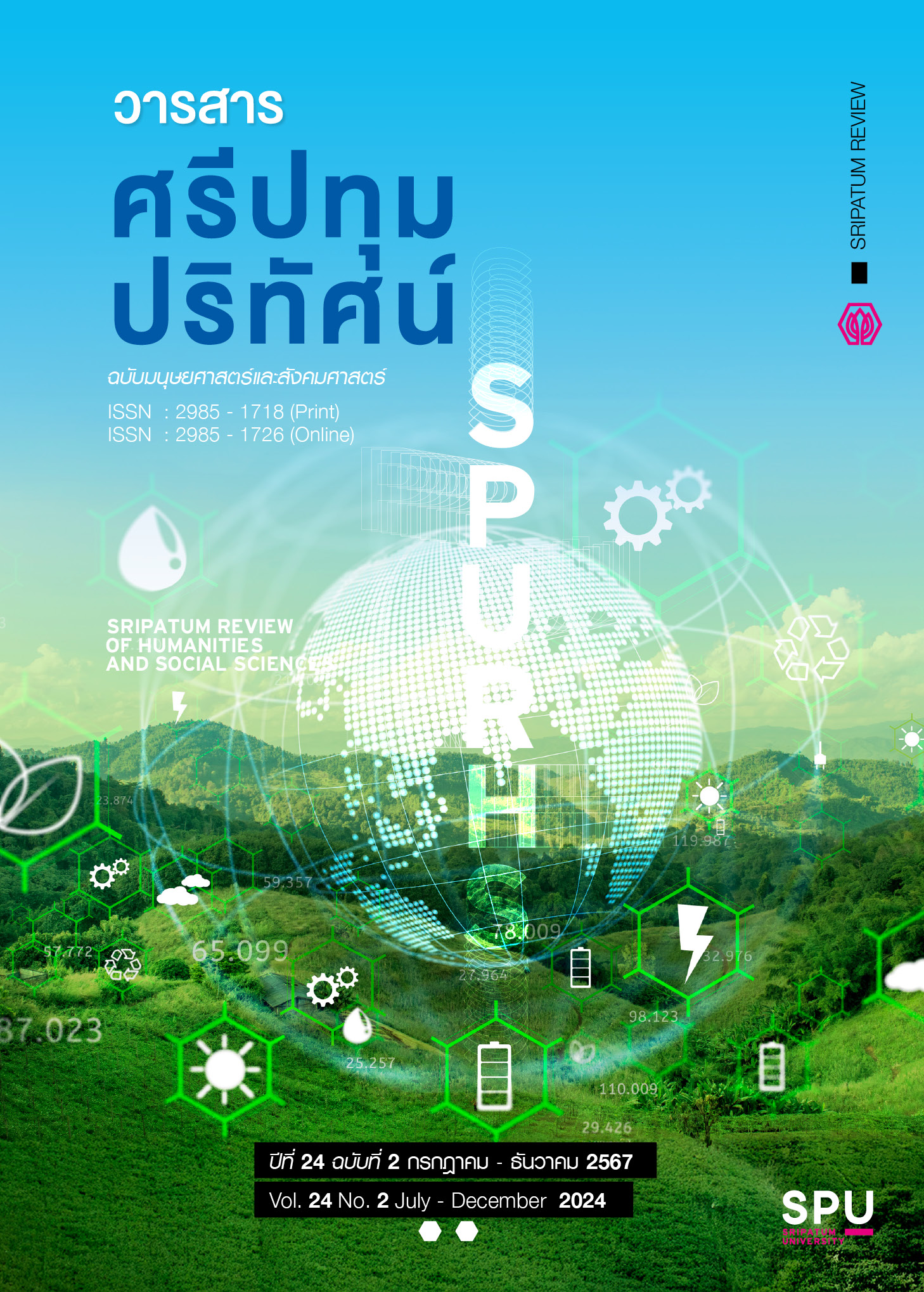Approach to Developing Creative Short Documentaries for Human Rights Communication Issued of Inequality in Access to Higher Education in Bangkok
Main Article Content
Abstract
The objectives of this research were to (1) study the problems and issues of inequality in accessing higher education in Bangkok, (2) examine the key elements, processes, techniques, methods, and steps in developing a creative short documentary film to communicate human rights issues related to inequality in accessing higher education in Bangkok, and (3) create a prototype of a creative short documentary film to communicate human rights issues related to this inequality in accessing higher education in Bangkok. This research employed a research and development methodology using qualitative research methods. The key informants included: (1) documentary film experts and documentary film production professionals, (2) individuals providing relevant data for producing the documentary film, and (3) the general public, students, and scholars. The research instruments used were in-depth interviews, data recording forms, focus group records, and reflective thinking forms. Data analysis was performed using descriptive analysis. The study was approved by the ethics committee for human research with COA. No. SPUIRB-2023-023.
The research findings revealed that (1) the context of problems and issues of inequality in accessing higher education in Bangkok consisted of issues related to identifying talents and aptitudes, educational opportunities, educational costs, classroom stratification, educational budgeting, and the application process; (2) the essential elements of developing a short documentary film included three main phases: 1) pre-production, which involved research and development of ideas, as well as production planning; 2) production, which involved planning and preparation, filming, interviewing, sound recording, lighting control, data recording, and checking visual and audio quality. The elements that made the documentary film engaging in terms of visuals were: 2.1) capturing visuals that conveyed meaning and the subjects' responses, 2.2) conducting interviews to create diversity and narratives, 2.3) recording ambient sounds to create atmosphere, 2.4) controlling lighting to enhance mood, and 2.5) using visuals to symbolize and tell stories; and 3) post-production, which included editing sequences, adding effects, adjusting sound and color, adding background music, and making final corrections. The editing elements that made the documentary compelling were: 3.1) sequencing the story through the subjects' behaviors, 3.2) adjusting the image color to match the narrative, 3.3) using editing techniques like L-cut and J-cut, and 3.4) adding background sound and effects; (3) the characteristics of the short documentary prototype included six features: 1) visual composition with aesthetically pleasing camera angles and framing, 2) concise editing with emotional depth, 3) clear, simple sound composition with no distractions, 4) storytelling that is easy to understand and visualize, 5) content or issues that are not commonly portrayed, and 6) characters that are relatable to the issues at hand.
Article Details

This work is licensed under a Creative Commons Attribution-NonCommercial-NoDerivatives 4.0 International License.
1. กองบรรณาธิการสงวนสิทธิ์ในการพิจารณาและตัดสินการตีพิมพ์บทความในวารสาร
2. บทความทุกเรื่องจะได้รับการตรวจสอบทางวิชาการโดยผู้ทรงคุณวุฒิ แต่ข้อความและเนื้อหาในบทความที่ตีพิมพ์เป็นความรับผิดชอบของผู้เขียนแต่เพียงผู้เดียว มิใช่ความคิดเห็นและความรับผิดชอบของมหาวิทยาลัยศรีปทุม
3. การคัดลอกอ้างอิงต้องดำเนินการตามการปฏิบัติในหมู่นักวิชาการโดยทั่วไป และสอดคล้องกับกฎหมายที่เกี่ยวข้อง
References
Apple, M. W. (2013). Education and Power: Taylor & Francis.
Attewell, P. (2001). Comment: The First and Second Digital Divides. Sociology of Education, 74(3), 252-259. https://doi:10.2307/2673277
Bill Nichols. (2017). Introduction to Documentary, (Third edition). Bloomington: Indiana University Press.
Dewey, J. (1910). How We Think: D.C. Heath & Company.
Freire, P. (2000). Pedagogy of the oppressed: Thirtieth anniversary edition. New York : Continuum, [2000] ©2000.
Gardner, H. (1983). Frames of mind : the theory of multiple intelligences. New York: Basic Books.
Mayer, R. E. (2001). Multimedia Learning: Cambridge University Press.
OECD. (2012). Equity and Quality in Education.
Rabiger, M. (2009). Directing the documentary (Fifth edition ed.). Amsterdam: Focal Press/Elsevier.
Rojnkureesatien, T. (2013). Power of Persuasion in a Documentary Film: A Case Study of" An Inconvenient Truth". Mahidol University.
Sen, A. (1999). Development as Freedom: Oxford University Press.
Vygotsky, L. S., & Cole, M. (1978). Mind in Society: Development of Higher Psychological Processes: Harvard University Press.

